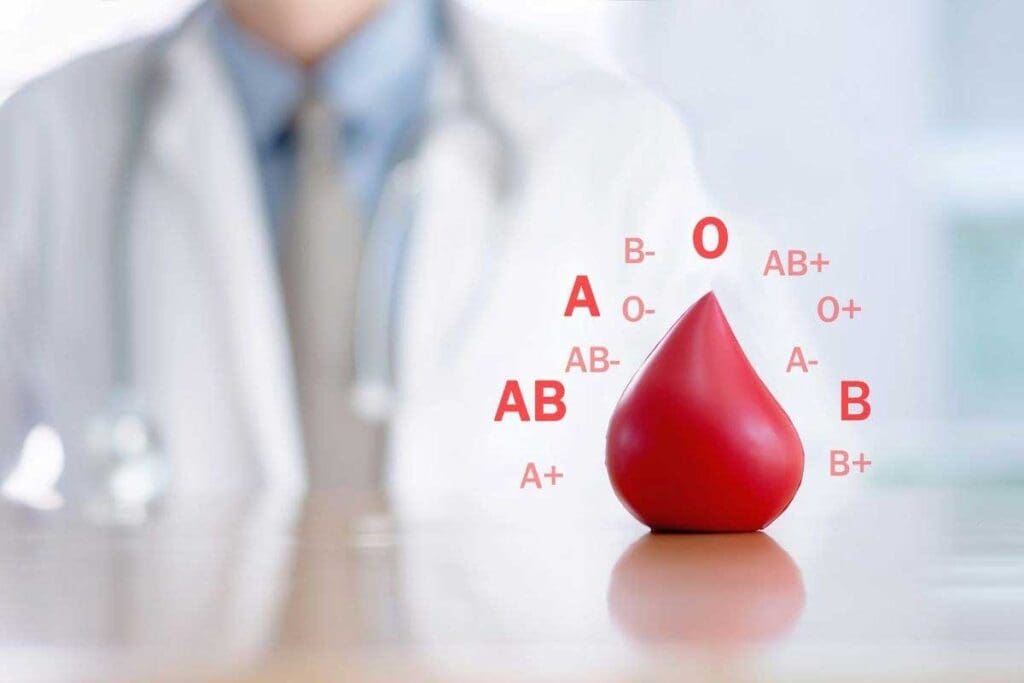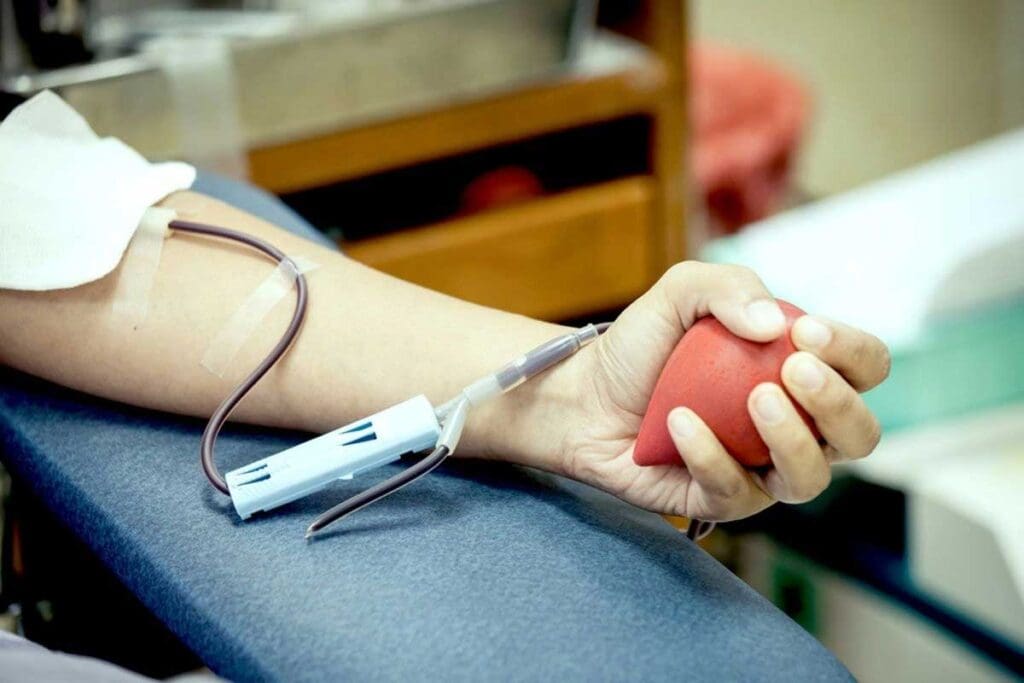Last Updated on November 17, 2025 by Ugurkan Demir

Knowing about blood type compatibility is key to safe transfusions. At Liv Hospital, we focus on top-notch medical rules. This ensures every donation or transfusion is safe, trusted, and of the highest quality.Use this blood compatibility chart for safety. Get 5 crucial charts and powerful facts for safe blood donation and receiving now.
The ABO and Rh blood group systems are key in finding compatibility. We use blood type receive and donate charts to help doctors make the right choices.
These charts are vital for safe blood donation and transfusions. They show which blood types can give and receive blood. By looking at these charts, we make sure medical actions are done with great care and precision.
Knowing about blood types is key to safe blood transfusions and donations. Blood type compatibility depends on specific antigens on red blood cells. These are mainly categorized by the ABO blood group system and the Rh factor.
The ABO system divides blood into four main types: A, B, AB, and O. It’s based on A and B antigens on red blood cells. Type A blood has A antigens, Type B has B antigens, Type AB has both, and Type O has none. This system is vital for blood transfusion compatibility.

The Rh factor is another key antigen on red blood cells. It can be present (Rh positive) or absent (Rh negative). When combined with the ABO system, it creates eight common blood types.
The Rh factor is very important during pregnancy and blood transfusions. It ensures the donor and recipient are compatible. Knowing both the ABO and Rh systems is essential for safe blood donation and transfusions.
A complete blood compatibility chart is key to safe blood transfusions. It shows which blood types can give or receive blood. This is based on the ABO and Rh blood group systems.
Blood type matching is vital for safe transfusions. For example, O-negative blood can go to anyone, making it a universal donor. On the other hand, AB-positive blood can accept any ABO blood type, making it a universal recipient.
Blood donor rules help prevent harmful reactions. These rules consider the ABO and Rh types of both the donor and the recipient.

For recipients, matching blood types is critical. They must get blood that matches their ABO and Rh type to avoid bad reactions.
Here is a simplified blood compatibility chart:
| Blood Type | Can Receive From | Can Donate To |
| O- | O- | O-, O+, A-, A+, B-, B+, AB-, AB+ |
| O+ | O-, O+ | O+, A+, B+, AB+ |
| A- | A-, O- | A-, A+, AB-, AB+ |
| A+ | A-, A+, O-, O+ | A+, AB+ |
| B- | B-, O- | B-, B+, AB-, AB+ |
| B+ | B-, B+, O-, O+ | B+, AB+ |
| AB- | AB-, A-, B-, O- | AB-, AB+ |
| AB+ | AB+, AB-, A+, A-, B+, B-, O+, O- | AB+ |
By following these guidelines and using a detailed blood compatibility chart, healthcare professionals can greatly lower the risk of transfusion problems.
The idea of universal donors and recipients is key in emergency medical care. Knowing which blood types can mix safely is vital for good treatment.
O-Negative blood is special because it doesn’t have A, B, or Rh antigens. This makes it safe for anyone to receive in urgent situations. We count on O-Negative donors to save lives when time is short.
AB-Positive people can get blood from any donor. This flexibility is why they’re so important in transfusions. We need a wide range of donors to help AB-Positive patients.
In short, knowing who can donate and who can receive blood is critical. By understanding O-negative and AB-positive blood, we can manage blood better. This ensures patients get the care they need.
In emergencies, blood group donor and recipient charts are very important. They help healthcare professionals make quick and correct decisions about blood transfusions.
These charts ensure that the blood given matches the recipient’s blood type. This reduces the chance of bad reactions. The charts are easy to use, helping medical teams act fast in emergencies.
When the recipient’s blood type is unknown, O-negative blood is often used. This is because it is safe for most people. This rule is key in emergency transfusions around the world.
Emergency transfusion rules also stress the need for fast action. Doctors must quickly decide the best transfusion plan. They must balance the need for quick action with the risks of unknown blood types.
It’s important to assess risks in emergency blood transfusions. Even though O-negative blood is generally safe, there are risks. These risks are higher if the recipient has antibodies against certain blood components.
A detailed risk assessment looks at the recipient’s health history, how urgent the transfusion is, and if there’s compatible blood available. This careful planning is key to avoiding problems and getting the best results.
| Blood Type | Can Receive From | Can Donate To |
| O Negative | O Negative | O Negative, O Positive, A Negative, A Positive, B Negative, B Positive, AB Negative, AB Positive |
| A Positive | A Positive, A Negative, O Positive, O Negative | A Positive, AB Positive |
| AB Positive | All Blood Types | AB Positive |
By knowing the compatibility chart and following emergency transfusion rules, doctors can lower risks. This is true even in the most urgent situations.
In transfusion medicine, knowing the details of blood type matching is key, more so in special cases. Some people have rare blood types or weak immune systems. This makes it important to plan carefully for safe blood transfusions.
Rare blood types, like Rh-null, are big challenges. They are found in less than 1 in 10 million people. Finding compatible donors for these types requires a lot of testing and screening.
We use advanced methods to match rare blood types. This includes serological and molecular typing to find the right blood group antigens. This way, we can lower the chance of bad reactions and make transfusions safe.
Patients with weak immune systems need extra care with blood transfusions. They are more likely to have bad reactions. So, we take extra steps, like using irradiated blood and choosing donors carefully.
The table below shows important points for blood transfusions in patients with weak immune systems:
| Blood Component | Special Consideration | Benefit |
| Irradiated Red Blood Cells | Prevents Graft-Versus-Host Disease (GVHD) | Reduces risk of GVHD in immunocompromised patients |
| Leukoreduced Blood Components | Reduces risk of transfusion-related complications | Minimizes risk of adverse reactions |
| CMV-Negative Blood Components | Reduces risk of CMV transmission | Protects against CMV infection in vulnerable patients |
By knowing what immunocompromised patients need and using special blood components, we can make sure transfusions are safe and work well.
Plasma and platelets are key in blood donation and transfusions. Unlike red blood cells, they have their own rules for matching.
Plasma matching is vital to avoid bad reactions during transfusions. Plasma from certain donors can be given to those with matching blood types. For example, AB plasma can go to anyone, making it the universal donor type for plasma. People with AB blood can get plasma from any ABO blood type.
Platelet donation rules are key to effective transfusions. Platelets are often given to patients undergoing chemotherapy, surgery, or those with bleeding disorders. The rules for platelets are less strict than for red blood cells, but they need careful matching.
It’s important to know and follow these guidelines for plasma and platelet matching. This ensures safe and effective blood transfusions. We need to keep educating donors, healthcare providers, and patients on these key transfusion medicine aspects to better patient care.
It’s key to use blood compatibility charts for patient safety during transfusions. Matching blood types correctly is vital. It stops harmful reactions and keeps patients safe.
We stress the need for accurate matching and the role of blood charts. Knowing about ABO and Rh blood groups helps. This knowledge and these charts guide healthcare professionals to avoid bad reactions and protect patient health.
Medical teams use charts to pick the right blood for patients. This careful choice is critical for safe transfusions. It leads to better health outcomes and lowers risks from blood transfusions.
A blood compatibility chart helps figure out which blood types can safely give or receive blood. It’s key to avoiding bad reactions during blood transfusions. This is because it makes sure the donor and receiver have the right blood types.
The ABO and Rh systems sort blood into different types based on certain antigens on red blood cells. The ABO system has four main types (A, B, AB, and O). The Rh system adds whether someone is Rh positive or negative. Together, they make eight common blood types that show if blood is compatible.
People with O-negative blood can donate to anyone in emergencies. They’re called universal donors. On the other hand, those with AB-positive blood can get blood from any donor. They’re universal recipients.
Blood donor rules say the donor’s blood type must match the recipient’s to avoid bad reactions. For example, O-negative donors can give to anyone. AB-positive recipients can get blood from any donor.
In emergencies, healthcare pros use blood compatibility charts to quickly choose the right blood type for transfusions. These charts help them pick the safest blood type for the patient, reducing the chance of bad reactions.
Rare blood types, like Rh-null, need careful matching to ensure safety. Immunocompromised patients are more at risk for bad reactions. So, healthcare pros must be extra careful when transfusing blood to these patients.
Plasma transfusions need to be compatible to avoid bad reactions. Platelet donations also require matching to work well. Healthcare pros must follow specific rules for plasma and platelet transfusions to keep patients safe and effective.
Blood type matching charts are vital in transfusion medicine. They help ensure patients get safe and compatible blood transfusions. By understanding the ABO and Rh systems and using these charts, healthcare pros can prevent bad reactions and protect patient health.
Jeon, Y. W., Lim, J. Y., & Kim, H. (2023). Blood transfusion reactions: pathophysiology, detection, and management — a comprehensive review. BMC Hematology & Transfusion Medicine, 9, 102. https://pmc.ncbi.nlm.nih.gov/articles/PMC9144124/
Subscribe to our e-newsletter to stay informed about the latest innovations in the world of health and exclusive offers!